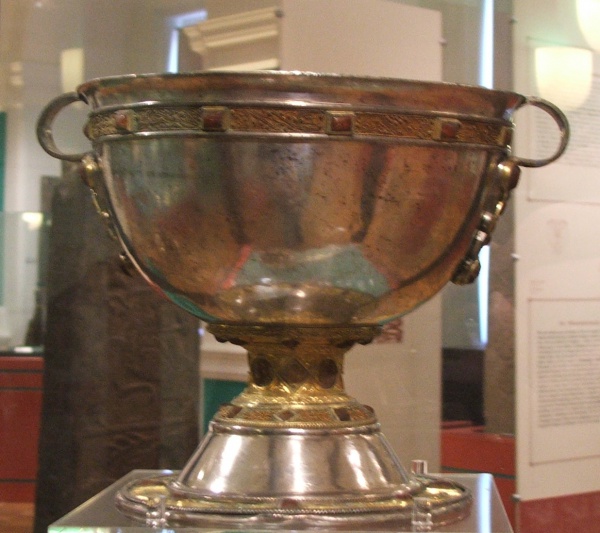Facts About Derrynaflan Chalice
The Derrynaflan Chalice, dating back to the 8th or 9th century, is a magnificent historical artifact discovered as part of the Derrynaflan Hoard. This collection, comprising five liturgical vessels, was unearthed on February 17, 1980, near Killenaule, County Tipperary, Ireland. The find is an extraordinary example of early medieval Irish ecclesiastical art.
The discovery occurred at Derrynaflan, a pasture island surrounded by bogland, which was once the site of an early Irish abbey. In addition to the chalice, the hoard included a composite silver paten, a hoop likely used as a stand for the paten, a liturgical strainer, and a bronze basin found inverted over the other items. These artifacts are considered some of the finest examples of Insular metalwork that have survived to the present day.
After being donated to the Irish State, the hoard is now proudly displayed at the National Museum of Ireland. It is believed that the hoard was hidden during the tumultuous 10th to 12th centuries, a period marked by Viking raids and internal strife in Ireland.
The discovery was made by Michael Webb and his son, who were exploring the ancient monastic site with a metal detector. Their find led to a significant legal battle over ownership, ultimately resulting in changes to Irish treasure trove laws.
Interestingly, the Ardagh Chalice, another masterpiece from a similar period, was found nearby in County Limerick. Some historians suggest that Feidlimid mac Cremthanin, the king-bishop of Cashel, might have been the patron of the Derrynaflan Chalice. Recognized as a masterpiece of Insular art, the chalice was even featured in the 1989 London exhibition "The Work of Angels: Masterpieces of Celtic Metalwork, 6th–9th Centuries AD."

 United Kingdom
United Kingdom